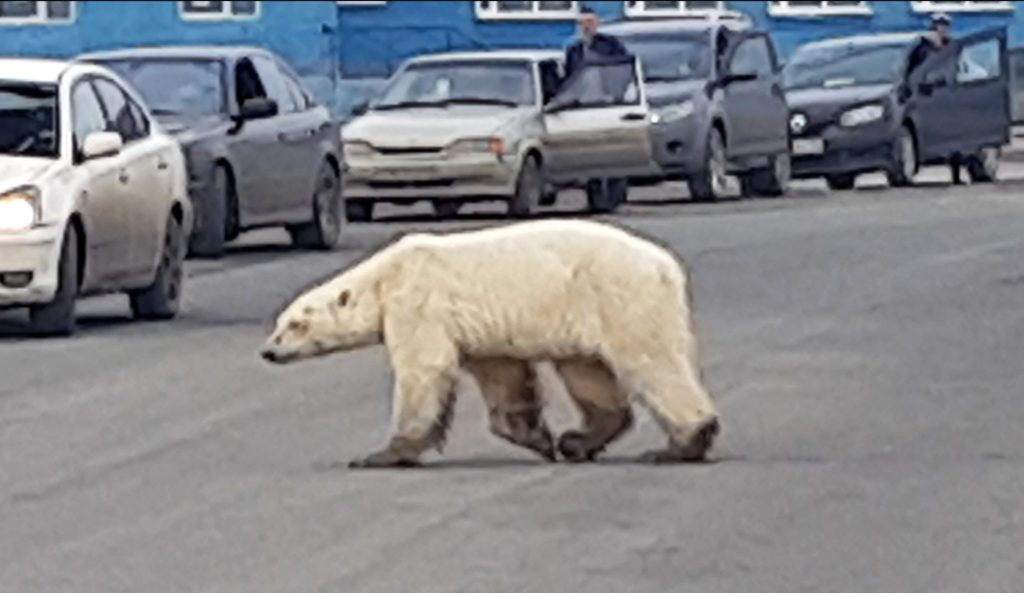Our world has come to the point that harsh conditions and difficult situations will put maybe even a polar bear to walk miles away from its home in order to have something to eat. According to the Siberian Times, reports from Roev Ruchey Zoo in Northern Siberia, Russia, the polar bear that searched for food in the city has already been caught in order to be treated in a wildlife park.
Reports have mentioned that the polar bear is female and has roamed around the major city in the city of Norilsk in Russia since at least Sunday last week, June 16, 2019. The experts have reported that it was desperately in need of “urgent medical treatment,” as they mentioned badly ill from eating from garbage dumps.
In the first minutes that they saw the starving bear, they speculated that the bear had roamed hundreds of miles from its habitat in the Arctic area. But now they think of the possibility that it may have been captured as a little cub and have been raised by traders, according to their newspaper.
Furthermore, according to experts, males are typically the ones who migrate in long distances and this bear was female. They also theorize that would have naturally been quite dirty if it made a long trek but the bear was clean, as reported by the Times. For over 60 years, polar bear poaching has been banned in Russia but an estimated 200 of them are still killed every year in the Far East region.
Wildlife experts were called to assess the polar bear and determine whether it could be taken back to the Arctic. Currently, the polar bear is being “isolated from unnecessary attention,” a veterinarian shared with the Siberian Times.
“It was obvious from the first moment we saw her that she was very stressed due to being in the city and surrounded by so many people,” veterinarian Georgy Belyanin said.
As Stanley-Becker reported, polar bears “are classified as a vulnerable species because of the ‘ongoing and potential loss of their sea-ice habitat resulting from climate change,’ according to the World Wildlife Fund.
He added:
The U.S. Geological Survey warned in 2007 that two-thirds of the global population of polar bears could be wiped out by 2050 because of thinning sea ice.
That prediction has periodically found stark visual expression. In December 2017, the world’s attention was briefly focused on a video of an emaciated polar bear, struggling to stand in the Canadian Arctic.
“This is what starvation looks like,” Paul Nicklen, the photographer who captured the scene, wrote on social media. “The muscles atrophy. No energy. It’s a slow, painful death. When scientists say polar bears will be extinct in the next 100 years, I think of the global population of 25,000 bears dying in this manner.”
The Siberian Times reported that Russia toughened its penalties for polar bear poaching last year.





